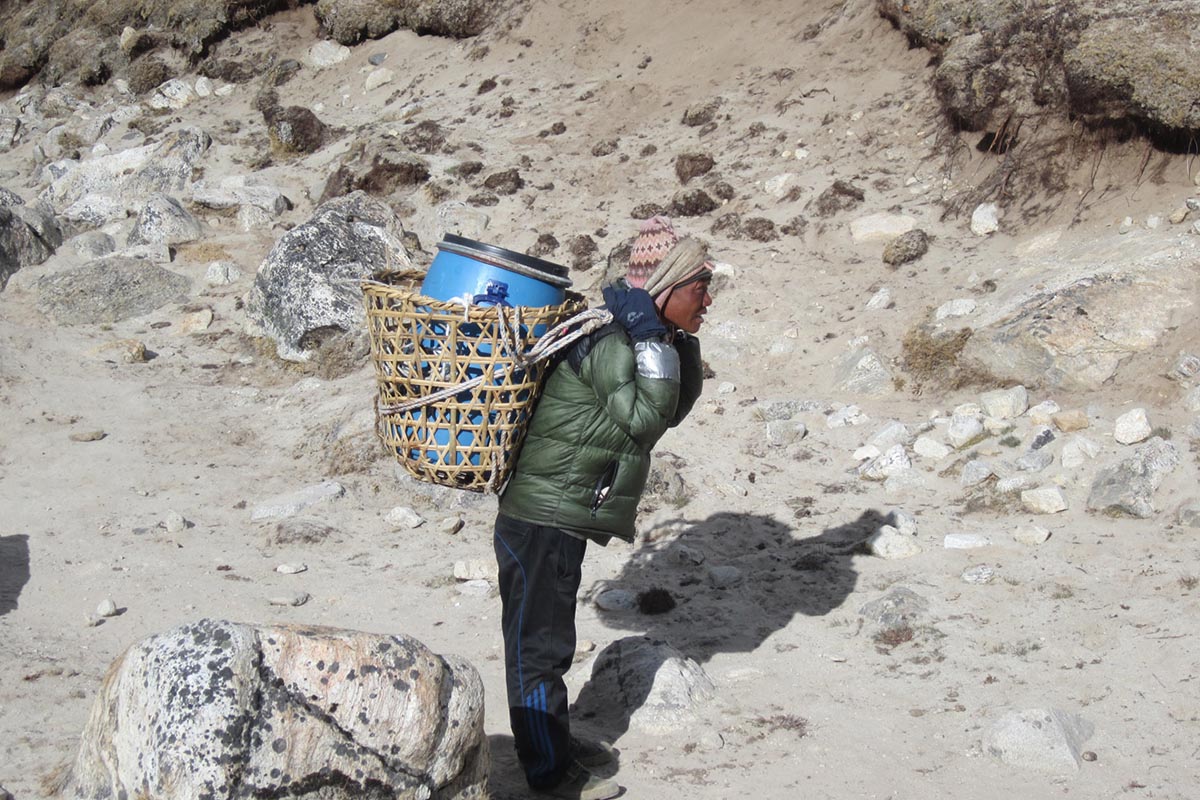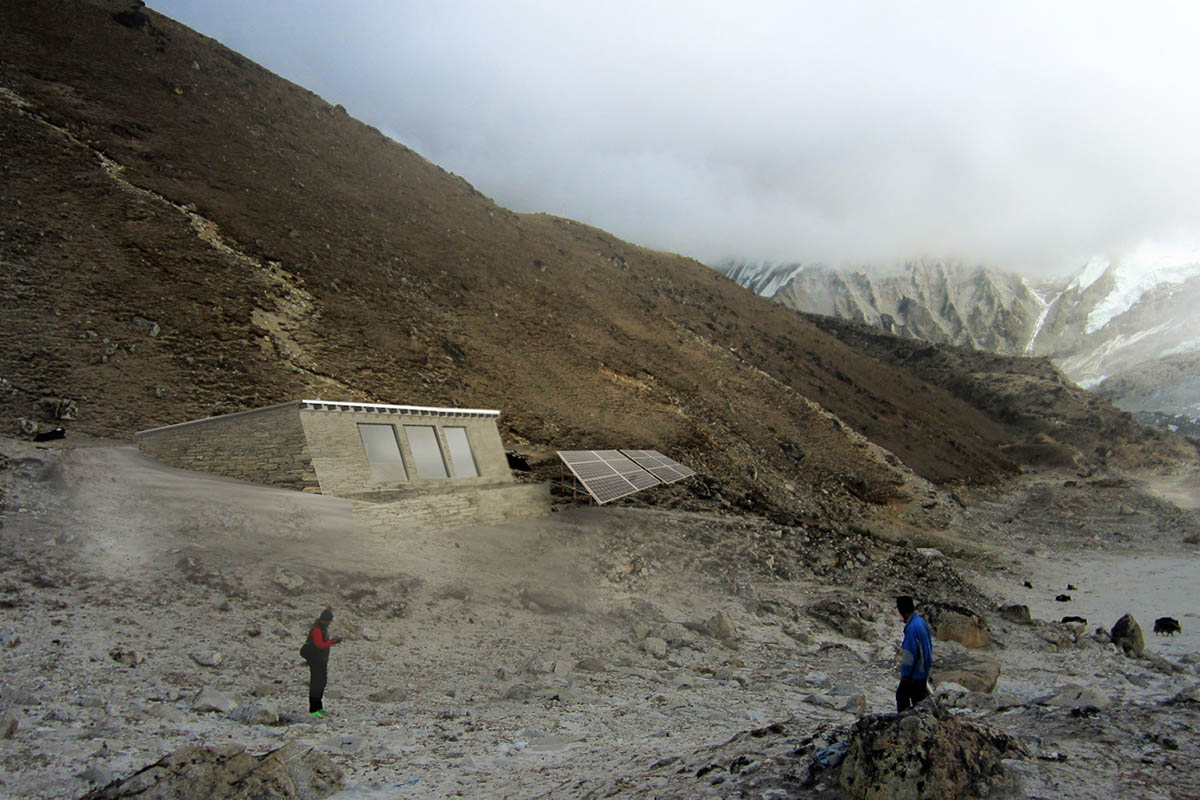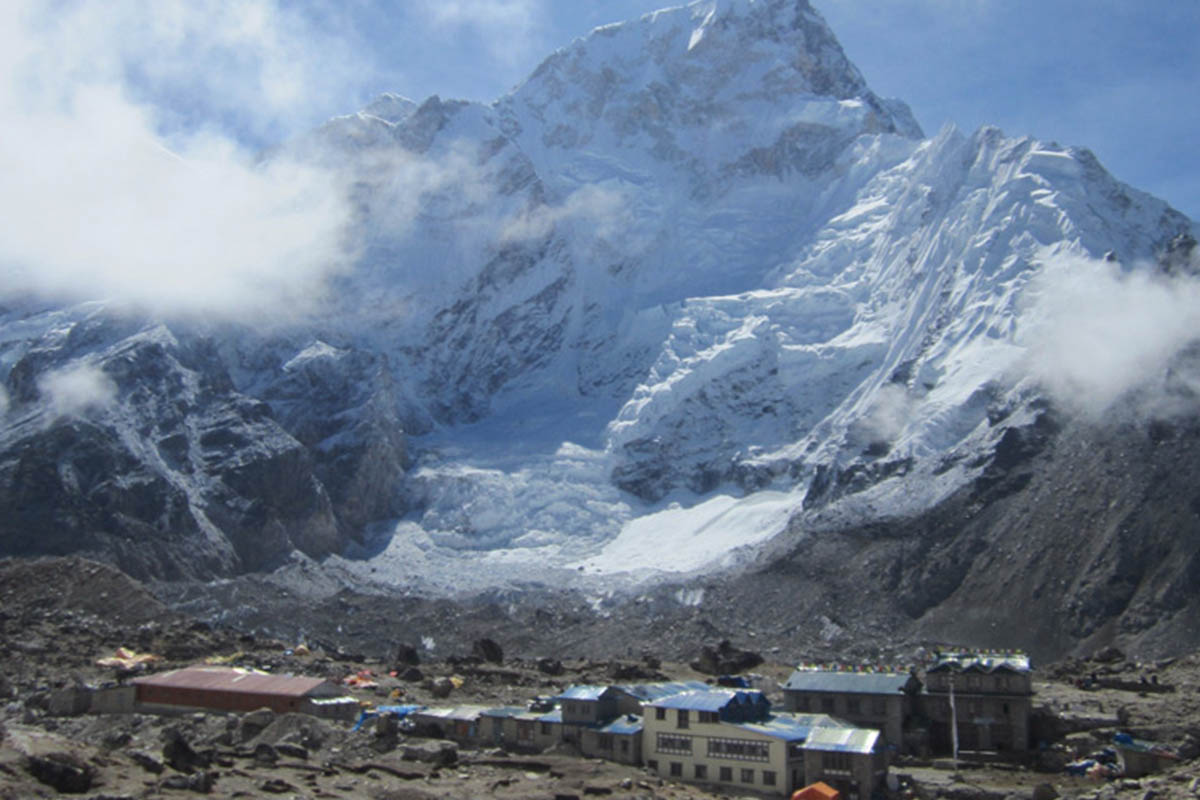Mt. Everest Biogas Project
Mt. Everest Biogas Project
Project Status: on going
GOALS AND OBJECTIVES
Professional Everest climbing guide Dan Mazur and Garry Porter have founded The Mt. Everest Biogas Project, a group of volunteer engineers from the Seattle, Washington area. The objective of the Mt. Everest Biogas Project (MEBP) is to develop and implement an environmentally sustainable solution to the problem of human waste on Mt. Everest and other remote, alpine locations. Each year, thousands of climbers and support staff populate Everest Base Camp (elev: 5330m) for several months during the climbing seasons, producing approximately 12,000 kg of solid human waste. Although local regulations enforce the removal and disposal of trash from the region, little effort has focused on how to deal with the human waste. The current practice is to pack it down to the nearest teahouse village of Gorak Shep from base camp in barrels and dump it into open pits, just above the flow of the Khumbu Glacier that feeds the lower valley. The untreated waste in these unlined pits poses a danger both to the environment and to the public health of the Sherpa people who live in the region.
The Mt. Everest Biogas Project recognizes there is no simple solution to this problem at such high altitudes.
It intends to address this challenge by meeting these four benchmarks:
1. Engineer a variation on the traditional anaerobic bio-digester that can break down harmful pathogens in cold climates;
2. Construct the bio-digester system at Gorak Shep
3. Test the efficacy of the design extensively;
4. Train local Sherpas to run and maintain the digester indefinitely. The primary goal is to process 100% of the fecal waste produced at Everest Base Camp, thereby diverting a growing amount of raw sewage from nearby glacial melts.
Other outputs include 1) methane gas as a by-product that can be used for cooking by the local community; 2) safe effluent as a by-product that can be used for growing crops; 3) surplus electricity at peak times for locals to use; and 4) full-time jobs and training for local Sherpas in construction and running the digester. Once the solution has been proven successful, the MEBP intends to make the design a replicable open source for communities that face the challenge of disposing human waste in other extremely cold climates.

HOW DOES IT CONTRIBUTE TO MOUNTAIN PROTECTION
Currently, there are no economical long-term sustainable solutions on resolving the environmental impact of the human waste being carried off the base camps of Mt. Everest and being dumped near Gorak Shep. The issue of environmentally disposing of human waste created by mountain tourism is neither new nor unique to the Mt. Everest region. What is unique about this project is that it adapts existing biogas digester technology that has been successfully implemented throughout Nepal, China, India and other developing countries, but at lower elevations and warmer climates. To bring this technology to the extreme conditions of the upper Himalayas, this project will combine the basic design of a Nepalese biogas digester with a low technology, off the shelf heating design that will allow the biogas digester to operate in a colder environment.
The Mt. Everest Biogas Project will eliminate the annual dumping of 26,000 pounds (12,000 kilograms) of solid human waste at the teahouse village of Gorak Shep. Additional environmental benefits of this project are reduced reliance on burning wood or yak dung for heating and the resultant respiratory and ocular health risks; reduced deforestation of the areas limited wood resources; and a reduced risk of water contamination by fecal coli form.
COLLABORATION WITH LOCAL COMMUNITIES AND AUTHORITIES
The primary organizational and decision making group in Gorak Shep is a committee of 5-6 teahouse owners, who is community contact point and is involved in the project implementation and operation. Upon project completion, this committee will assume ownership and responsibility for the long-term operation of the biogas reactor. The committee was briefed on the biogas digester concept and initial design and implementation strategy in June 2013. The teahouse owners are very enthusiastic about the potential of eliminating this environmental nightmare that is impacting their local community and considered an insult to their sacred mountain. The most frequent question was: how soon can the project start? The local community also understands the economic benefit of free methane rich biogas for cooking and lighting. Plus the project will provide local community members education in a trade during construction and long-term work opportunities in operating and maintaining the biogas system.
Over the past 5 years, the Mt. Everest Biogas Project has been working with the following local and regional organizations: Sagarmatha Pollution Control Committee – SPCC (a volunteer organization run by Sherpa’s from the Khumbu valley), The Buffer Zone Committee (organizes local volunteers to keep the trails clear of litter), Nepal Biogas Sector Partnership (BSP – implementation of biogas technology in Nepal, Mount Everest Foundation for Sustainable Development (MEFSD) and Katmandu University (joint program Seattle University-Kathmandu University testing simulating mini-biogas digesters).


GOING FURTHER THAN “BUSINESS AS USUAL”
The issue of a sustainable approach to the problem of human waste in the world’s parks and mountains is a very difficult problem that deserves much attention and proposed solutions. “Business as usual” in regards to the issue of human waste on Everest would mean the continued dumping of human waste in pits leaving the local people to live with the results of this environmentally tragic approach. There may be other solutions but they are not practical in the face of the extreme and remote location of Gorak Shep and their costs are likely to be prohibitively high.
The Mt. Everest Biogas Project is the first solution to propose processing the waste on-site and producing economic benefits to the community while eliminating the current environmental nightmare. It is a win-win for Mt. Everest, the local community and the protection of the fragile eco-system of the Mt. Everest National Park. If implemented successfully at Gorak Shep, hundreds of other locations can benefit from high altitude biogas digesters to improve the lives of local people and their environment by reducing pollution, deforestation, health risks and costs to obtain alternate fuel sources.
Read the complete description of this project.
CONTACT
Garry Porter
home2olalla@gmail.com
mteverestbiogasproject.org

